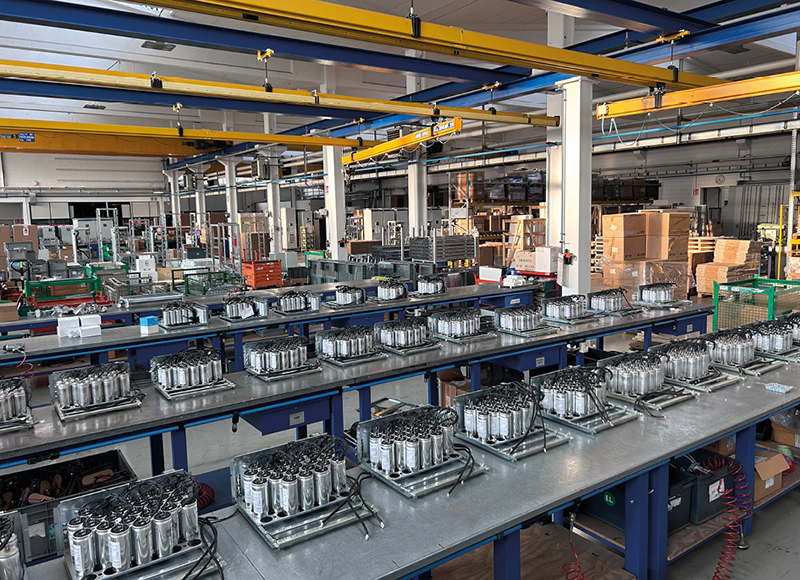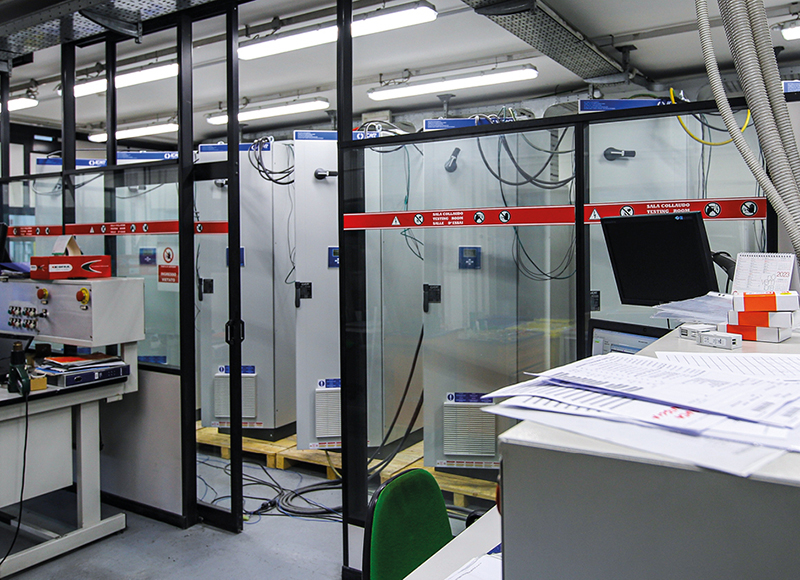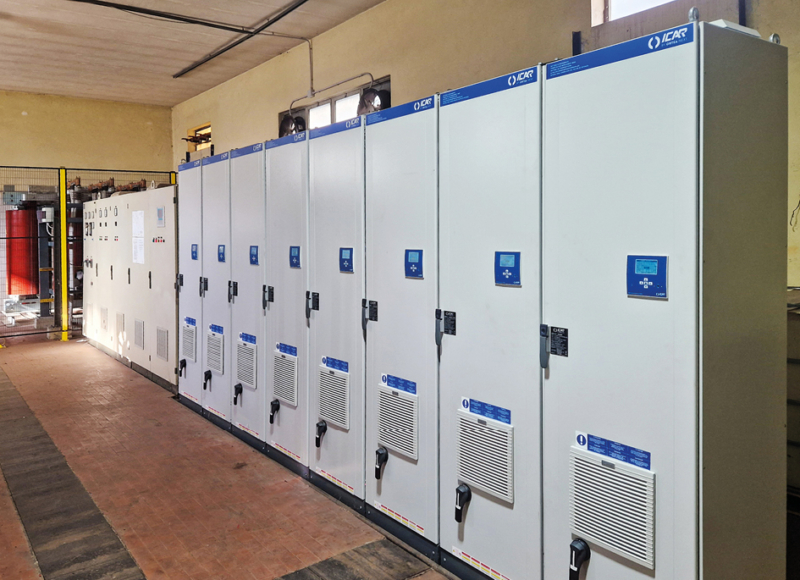WHAT IS REACTIVE ENERGY?
In electrical circuits the current is in phase with the voltage whenever are in presence of resistors, whereas the current is lagging if the load is inductive (motors, transformers with no load conditions), and leading if the load is capacitive (capacitors).
The total absorbed current, for example, by a motor is determined by vector addition of:
- IR resistive current;
- IL inductive reactive current.
These currents are related to the following powers:
- Active power linked to IR;
- Reactive power linked to IL.
The reactive power doesn’t produce mechanical work and it is an additional load for the energy supplier.
The parameter that defines the consumption of reactive power is the power factor. We define power factor the ratio between active power and apparent power.
Low cosφ, has the following disadvantages:
- high power losses in the electrical lines;
- high voltage drop in the electrical lines;
- over sizing of generators, electric lines and transformers.
In conclusion, reactive energy is a type of electrical energy that does not contribute to the actual work done by electrical devices. In other words, reactive energy is a type of energy that is used but not converted into useful energy.
From this we understand the importance to improve (increase) the power factor.
HOW DOES REACTIVE ENERGY AFFECT ELECTRICITY BILLS?
To limit the problems caused by reactive energy, power companies charge their customers a tariff for reactive energy used. This charge is calculated based on the amount of reactive energy used relative to the total amount of energy used. In other words, the more reactive energy you use, the higher your electric bill will be.
HOW TO REDUCE THE REACTIVE ENERGY USED?
There are several ways to reduce the reactive energy used, for example, you can use devices that use less reactive energy, such as high-efficiency electric motors.
The technically and always cost-effective solution is to install a power factor correction system, which is a series of capacitor banks that compensate for reactive energy used.
POWER FACTOR CORRECTION SYSTEMS
Power factor correction systems, through capacitor batteries, provide the reactive energy needed by the load without taking it from the grid.
In addition to the reduction/elimination of bill penalties, the technical-economic advantages due to the installation of a power factor correction system are as follows:
- Decrease in line and transformer losses due to lower absorbed current.
- Decreased voltage drops in the lines.
- Optimization of system sizing.
Correctly sized industrial electrical system rephasing represents the technological intervention with the lowest investment payback time. Generally, the rephasing of a production plant pays for itself within a few months.
Depending on the electrical consumers in the plant (duty cycle, power, power factor), the topology (radial, ring, etc.) and the size of the plant itself, once the need for power rephasing is calculated, a decision will be made on how to intervene in the plant.
The most common modes are distributed rephasing (each of the utilities is equipped with its own rephasing unit, typically fixed) and centralized rephasing (a single automatic rephaser enslaved to the entire plant is installed). It is then possible to implement “mixed” solutions depending on the peculiarities of the plant.
In installations with neither heavily deformed currents nor resonance problems, standard power factor correction systems are used. In cases where a current with a high harmonic content (THD) circulates in the electrical system and/or with the presence of a high risk of resonance with the MV/LV transformer, power factor correction systems with blocking inductances are used. In fact, in these cases, the installation of a power factor corrector without blocking chokes can cause rapid degradation of capacitors and result in dangerous electrical and mechanical stresses in the power components of the system. Detuning chokes protect the capacitors from harmonics and exclude the risk of resonances, but leave the harmonic content of the system current unaffected.







